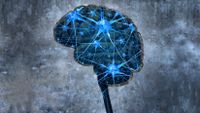Why students forget—and what you can do about it
Our brains are wired to forget, but there are research-backed strategies you can use to make your teaching stick.
Bạn đang xem: Why students forget—and what you can do about it

Teachers have long known that rote memorization can lead to lớn a superficial grasp of material that is quickly forgotten. But new research in the field of neuroscience is starting to lớn shed light on the ways that brains are wired to lớn forget—highlighting the importance of strategies lớn retain knowledge & make learning stick.
In a recent article published in the journal Neuron, neurobiologists Blake Richards và Paul Frankland challenge the predominant view of memory, which holds that forgetting is a process of loss—the gradual washing away of critical information despite our best efforts lớn retain it. According to lớn Richards and Frankland, the goal of memory is not just lớn store information accurately but lớn “optimize decision-making” in chaotic, quickly changing environments. In this model of cognition, forgetting is an evolutionary strategy, a purposeful process that runs in the background of memory, evaluating & discarding information that doesn’t promote the survival of the species.
“From this perspective, forgetting is not necessarily a failure of memory,” explain Richards và Frankland in the study. “Rather, it may represent an investment in a more optimal mnemonic strategy.”
The Forgetting Curve
We often think of memories as books in a library, filed away and accessed when needed. But they’re actually more lượt thích spiderwebs, strands of recollection distributed across millions of connected neurons. When we learn something new—when a teacher delivers a fresh lesson to lớn a student, for example—the material is encoded across these neural networks, converting the experience into a memory.
Forgetting is almost immediately the nemesis of memory, as psychologist Hermann Ebbinghaus discovered in the 1880s. Ebbinghaus pioneered landmark research in the field of retention and learning, observing what he called the forgetting curve, a measure of how much we forget over time. In his experiments, he discovered that without any reinforcement or connections khổng lồ prior knowledge, information is quickly forgotten—roughly 56 percent in one hour, 66 percent after a day, and 75 percent after six days.
So what can be done to preserve the hard work of teaching? After all, evolutionary imperatives—which prune our memories of extraneous information—don’t always neatly align with the requirements of curriculum or the demands of the Information Age. Learning the times tables doesn’t avail when running from lions, in other words, but in the modern world that knowledge has more than proved its mettle.
Xem thêm: Game Liên Minh Trên Điện Thoại Tốc Chiến Open Beta Trên Android Và Ios
The Persistence of Memory
The same neural circuitry appears khổng lồ be involved in forgetting and remembering. If that is properly understood, students & teachers can adopt strategies to lớn reduce memory leaks và reinforce learning.
MIT neuroscientists, led by Richard Cho, explain the mechanisms for synaptic strengthening in a 2015 article, also published in Neuron. When neurons are frequently fired, synaptic connections are strengthened; the opposite is true for neurons that are rarely fired. Known as synaptic plasticity, this explains why some memories persist while others fade away. Repeatedly accessing a stored but fading memory—like a rule of geometry or a crucial historical fact—rekindles the neural network that contains the memory và encodes it more deeply.
Researchers have also learned that not all new memories are created equal. For example, here are two sets of letters khổng lồ remember:
NPFXOSK ORANGESFor readers of English, the second phối of letters is more memorable—the more connections neurons have to other neurons, the stronger the memory. The seven letters in NPFXOSK appear random & disjointed, while ORANGES benefits from its existing, deeply encoded linguistic context. The word oranges also invokes sensory memory, from the image of an orange lớn its smell, và perhaps even conjures other memories of oranges in your kitchen or growing on a tree. You remember by layering new memories on the crumbling foundations of older ones.
5 Teacher Strategies
When students learn a new piece of information, they make new synaptic connections. Two scientifically based ways to lớn help them retain learning is by making as many connections as possible—typically lớn other concepts, thus widening the “spiderweb” of neural connections—but also by accessing the memory repeatedly over time.
Which explains why the following learning strategies, all tied lớn research conducted within the past five years, are so effective:
So even though forgetting starts as soon as learning happens—as Ebbinghaus’s experiments demonstrate—research shows that there are simple & effective strategies khổng lồ help make learning stick.















